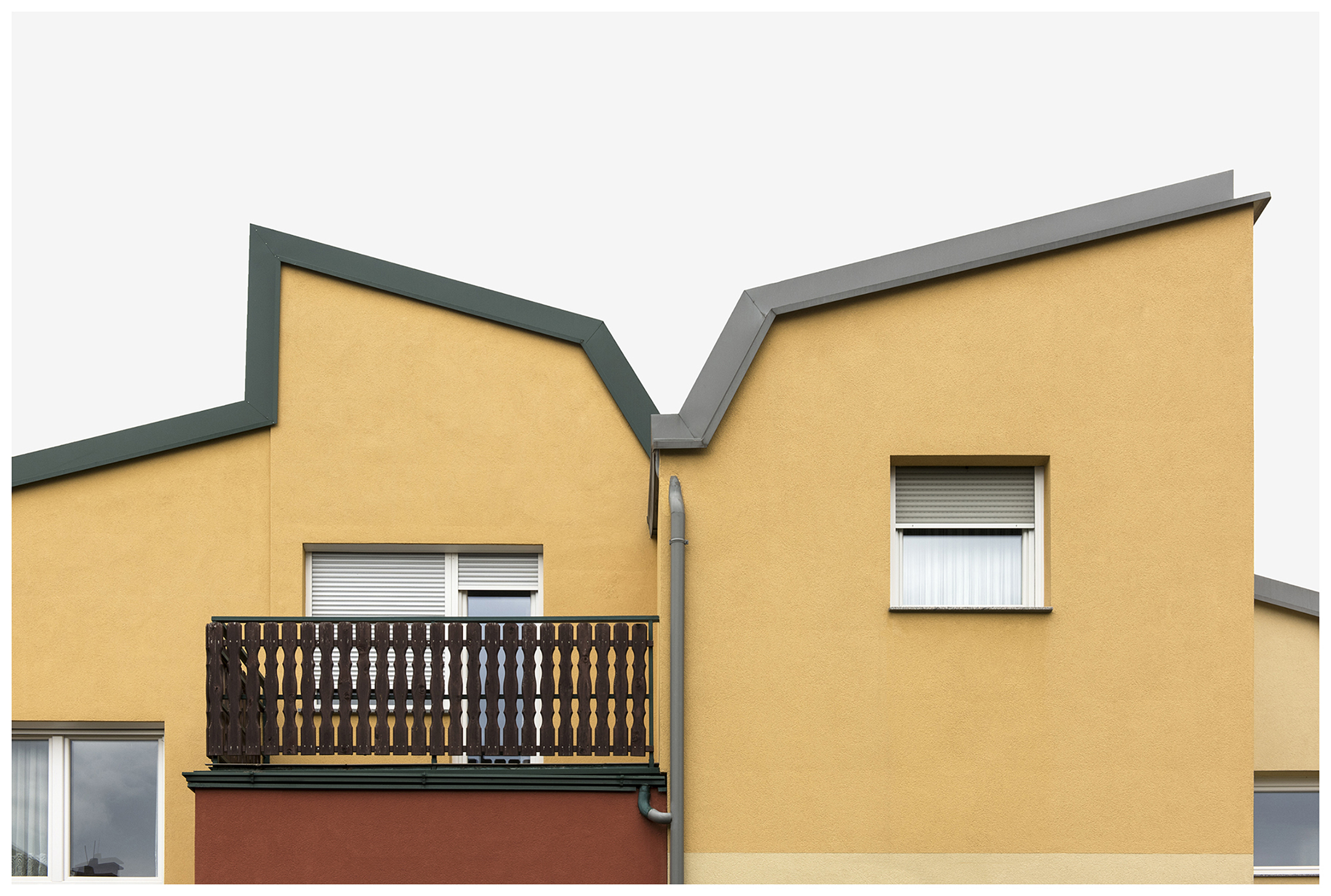












My Dreamhouse is not a House II
50-part photo series, archive material2019
Winner of the Acquisition Prize as part of the „Contemporary
Visual Art Award Of The Province of Styria (AT), 2019
curated by Rada Iva Janković
Collected by Neue Galerie, Universalmuseum Joanneum, Graz (AT)
Exhibition views:
solo exhibition, Forum Stadtpark 2019, funded by Steirische Kulturinitiativesolo presentation: Parallel Vienna, as part of studio das weisse haus, 2022 (c) images Joanna Pianka
My Dreamhouse is not a House (Part II) deals with the Gerlitzgründe in Graz
(AT), one of the first Austrian publicly funded participatory social
housing projects by architect Eilfried Huth from the 1970s.
The working method he developed provided a form of collaboration where architects and prospective residents could meet on equal terms. The results from these processes were single, occupant-designed homes within residential blocks where strong communities and friendships came to develop. Seeking to universalize housing access, Huth reserved the first construction phase (30 units) of the Gerlitzgründe for low-income parents aged under 30. The projects were unique because no possibility of a participatory approach existed outside the privately financed market at that time.
Julia Gaisbacher approaches the collaborative residential project through photography, archive material, interviews and a documentary film, addressing residents' relationships to the projects over the last 45 years. The work is intended as a contemporary document of the potentially positive impact that architecture can have on society.
Please also see the other project parts
My Dreamhouse is not a House (publication)
My Dreamhouse is not a House Part I
My Dreamhouse is Daydreams (documentary film)
The working method he developed provided a form of collaboration where architects and prospective residents could meet on equal terms. The results from these processes were single, occupant-designed homes within residential blocks where strong communities and friendships came to develop. Seeking to universalize housing access, Huth reserved the first construction phase (30 units) of the Gerlitzgründe for low-income parents aged under 30. The projects were unique because no possibility of a participatory approach existed outside the privately financed market at that time.
Julia Gaisbacher approaches the collaborative residential project through photography, archive material, interviews and a documentary film, addressing residents' relationships to the projects over the last 45 years. The work is intended as a contemporary document of the potentially positive impact that architecture can have on society.
Please also see the other project parts
My Dreamhouse is not a House (publication)
My Dreamhouse is not a House Part I
My Dreamhouse is Daydreams (documentary film)
